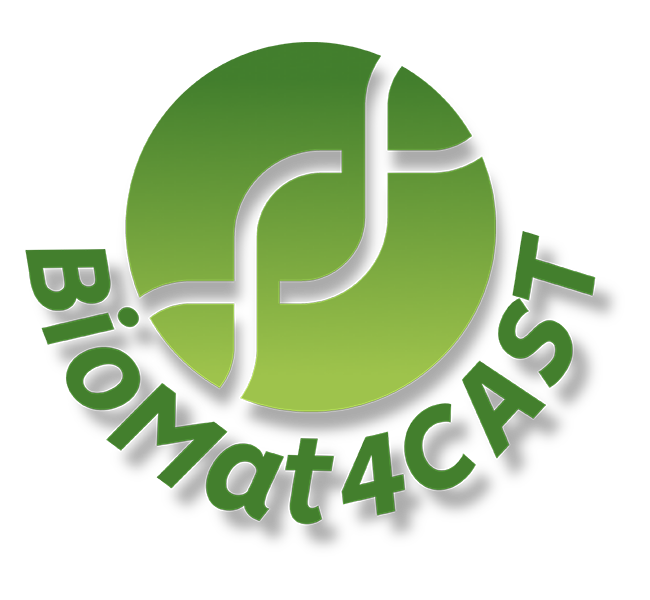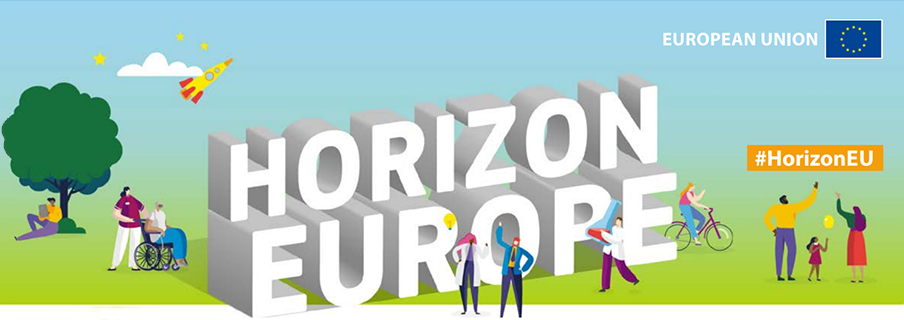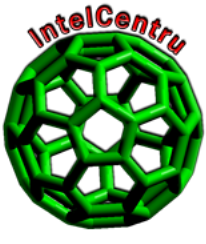| |
Trainings organised in PPIMC
|
ADVANCED COURSE
IN MODERN MOLECULAR MODELLING
|
|
|
Aatto Laaksonen,
Stockholm University & BioMat4CAST ERA Chair
Petru Poni Institute, Iasi, Romania
(Venue: Conference room of Petru Poni Institute – Main building)
|
|
MODULE I: INTRODUCTION TO MOLECULAR MODELLING
1. Molecular interactions (Thursday, January 25th, at 11am, 2024)
Topics: Why molecular modelling is important? What do we need for doing it? Matter & its
interactions and properties. Conceptual models: intermolecular interactions (non-bonded -
short range & long range), intramolecular interactions (bonded). Physical and chemical
conditions in modelling.
2. Atomistic Force Fields (Friday, January 26th, at 11am, 2024)
Topics: Putting all together: Molecular Mechanical Force Fields (MMFF) - rigid charge, polarizable, reactive for large biomolecular systems, specific interactions & penalty functions. Are FFs reliable? How they can be improved: Connecting to experiments or using AI. How FFs are used?
3. Molecular Modelling and Simulations (Wednesday, February 7th, 11am, 2024)
Topics: Introduction: Many-body systems, short history of modelling, scales of matter (length, time, other), particle-based methods for different scales (Quantum Chemistry, atomistic classical mechanics, mesoscopic soft matter), beyond particles, towards macroscopic, pros & cons of different methods, common software
4. Quantum Chemistry (Wednesday, February 21st, 11am, 2024)
Topics: Quantum mechanical concepts and terminology, valence bond theory, molecular orbital theory, semi-empirical MO methods, variational principle, Hartree-Fock (HF) approximation, restricted HF, unrestricted HF, Roothaan equations, basis functions, Slater/gaussian type of orbitals, post-HF, density functional theory (DFT) tight-binding DFT
|
|
MODULE II: PHYSICAL CHEMISTRY OF MOLECULAR MODELLING
5. Basics of Quantum Mechanics (Wednesday, April 19th, 11am, 2024)
Topics: Nothing is sure in QM - only probable, breakdown of classical physics: electromagnetic radiation, quantized energies, spectra, particle-wave duality, electron diffraction, postulates of QM, particle in a box, tunneling
6. Theoretical aspects of matter and processes in it: Thermodynamics (Wednesday, May 8th, 11am, 2024)
Topics: Laws of Thermodynamics, forms of energy and conversion between, systems, states & processes, internal energy, work, enthalpy, heat capacity, spontaneous processes, entropy, free energy
7. From micro to MACRO: Statistical Thermodynamics (Wednesday, May 15th, 11am, 2024)
Topics: Molecular vs molar, statistical method, probability, distributions, fluctuations, ensembles, energy levels, state functions, free energy, ideal & non-ideal gas, Van der Waals equation, virial theorem, phase space
8. Chemical kinetics: How to start chemical reactions & control their rates (Wednesday, May 22th, 11am, 2024)
Topics: Kinetics & thermodynamics, types of chemical rxns, endo/exothermic rxns, transition state, activation energy, Arrhenius law, catalysis, inhibitors
9. Spectroscopy – interaction between matter and radiation (Wednesday, May 29th, 11am, 2024)
Topics: Absorption & emission, molecular degrees of freedom and energy levels (electronic, vibrational, rotational, translational), electromagnetic radiation and transitions, spectral lines (intensity, broadening, shift, splitting), optical spectra, fluorescence, scattering, resonance spectra (ESR, NMR), NMR relaxation.
|
|
MODULE IIIa: PARTICLE-BASED METHODS OF MOLECULAR MODELLING
10. Classical Molecular Dynamics simulations (Tuesday, February 11, 11am, 2025)
Topics: The elements of MD, why does it work? Analysis of MD trajectories: structural, thermodynamic, dynamical and spectroscopic information, rare events.
11. Technical aspects of Molecular Dynamics (Friday, February 14, 11am, 2025)
Topics: Neighbor lists, look-up tables, Building a simulation cell, periodicity, minimum image convention, box size, cut-off, net moments.
12. Practical aspects of Molecular Dynamics (Tuesday, March 11, 1 pm, 2025)
Topics: Ensembles in MD, thermostats, barostats, analysis of trajectories, enhanced MD, visualisation of MD simulations, improved sampling, equilibrium & non-equilibrium MD, limitations of MD.
13. Ab initio Molecular Dynamics simulations (Tuesday. March 18, 1 pm, 2025)
Topics: Car-Parrinello method and Born-Oppenheimer MD, Path-integral MD, QM/MM simulations. Time-dependent density functionals theory MD, non-adiabatic MD simulations.
|
|
MODULE IIIb: FROM PARTICLE METHODS TO CONTINUUM (To be announced)
14. Stochastic & mesoscale simulations
Topics: Brownian motion, Langevin dynamics, lattice gas automata, dissipative particle dynamics (DPD), Flory-Huggins model.
15. Monte Carlo methods and simulations
Topics: Random numbers, solution of multiple integrals, detailed balance, ergodicity, Markovian master equation, Metropolis Monte Carlo, configurationally biased MC, kinetic Monte Carlo.
16. Lattice & grid simulations – methods and models
Topics: Boltzmann equation, collision models, coupling to hydrodynamics, Navier-Stokes, Cellular Automata: basic characteristics, definitions, rules, properties & examples. Lattice gas, Lattice Boltzmann, finite element simulations.
17. Other modelling methods of interest
Topics: Random sequential adsorption (RSA): From 1D (“car parking”) to 3D, applications of RSA. Phase Field (PF) modelling: phase boundaries, bulk & interfaces, PF parameters, example: spinodal decomposition. Elastic Network Models (ENM): From Gaussian elastic network (GEN) to Realistic Extension Algorithm via Covariance Hessian (REACH), Docking.
18. Multiscale modelling – connecting/coupling the scales
Topics: Multi-scale modelling approaches: hierarchical & multidomain, sequential, concurrent, spatial & temporal decomposition. Successive hierarchical coarse-graining. Fine-graining, bottom-up & top-down.
|
|
MODULE IV: APPLICATIONS OF MODELLING TOWARDS BIO SCIENCES
19. Modelling & simulating liquids and solutions
Topics: modelling water, water anomalies, different water models, aqueous solutions, liquid structure of water and water solutions, organic solvents.
20. Modelling and simulation of solvation and permeability
Topics: Dissolution, solubility, aggregation, lipophilicity, pKa, partition, logP, free energy of solvation, role atomic charges/Coulombic interactions, traditional in silico drug development.
21. Simulations of bio(logical) materials, systems and processes
Topics: Peptides, proteins, nucleic acids, carbohydrates, lipid membranes, nucleosomes, chromatin. Examples of Homology modelling.
22. Simulations in nano medicine and drug/gene transport/delivery
Topics: Nano materials: imaging, sensing, diagnosis & encapsulation of drugs and genes. Modelling of biological barriers, transport in blood, enhanced permeability & retention, binding to cell & endosomal uptake/escape, controlled release.
|
|
MODULE V: APPLICATIONS OF MODELLING IN MATERIALS SCIENCE
23. Materials Modelling
Topics: Porous materials: adsorption, diffusion. Polymeric materials: stimuli-responsive polymers, conductive polymers, sensors, composite materials, carbon materials: active carbon, graphene, nanotubes, carbon dots, super capacitors, nano-fluidics, knowledge-based vs physics-based modelling, inverse design.
24. Soft matter simulations
Topics: Mesoscopic & coarse-grain models: ad hoc & effective potentials. Applied on colloids, amphiphilic systems, surfactants, membranes, vesicles, liposomes, liquid crystals, Janus particles, gels etc.
25. Modelling of ionic liquids and deep eutectic solvents
Topics: green chemistry, ILs: highly complex systems, microheterogeneity, viscosity, transport properties, ILs confined & embedded at surfaces.
26. Modelling & simulations of biomass
Topics: Dissolution & decomposition of cellulose, fractionation and degradation of lignin using ionic liquids as solvents and co-catalysts. Production of valuable, chemicals, fuels and bio-H2.
27. Modelling of lubrication and tribology
Topics: Viscosity, lubricants, additives, friction, rheology, stability, roughness, extreme temperatures & pressures, non-equilibrium simulations.
|
Upon request lectures with special topics or areas of interests can be provided,
as well as specialists lectures given by invited experts may be scheduled
|
|


